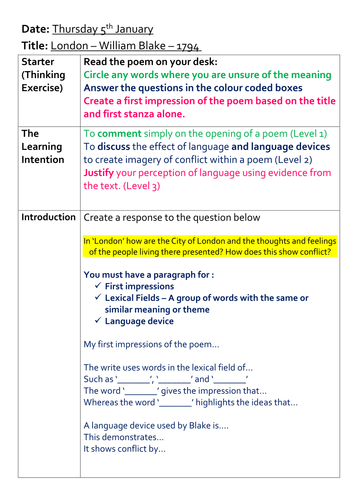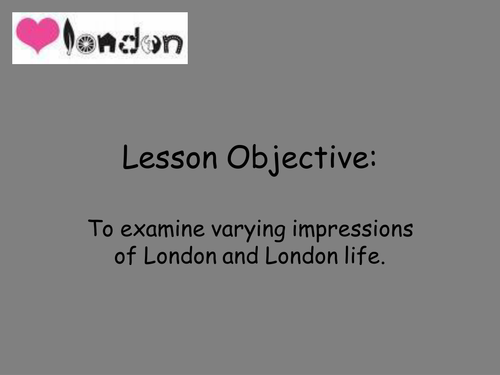William blake poetry analysis pdf
Year 10 Poetry Assignment- The Romantics- Blake and Lamb H a l e S c h o o l F i n a l e d i t i n g b y I s s u u Ross Heard An in depth analysis and creation of work done…
During the current and the past decades, several researches have accomplished the CDA in the realm of poetry i.e. critical discourse analysis of Marsiya-e-Hussain ( Rizwan, Saeed, & Fayyaz, 2013
Any Analysis of The Garden of Love by William Blake should note the following point about meter and rhyme: The poem is made of three quatrains, that is, three stanzas of four lines each. Almost every line in the poem is either eight or nine syllables until the last two lines, which are ten syllables.
An analysis of “The Chimney Sweeper” in the Songs of Innocence(This analysis is for Songs of Innocence. For the Songs of Experience analysis, follow the link!) by William Blake …
Free download or read online Songs of Innocence and of Experience pdf (ePUB) book. The first edition of this novel was published in 1794, and was written by William Blake. The book was published in multiple languages including English language, consists of 56 pages and is available in Paperback format. The main characters of this poetry
William Blake is considered as the earliest poet of the “Romantic movement”, the characteristic features of which were predominant in the poetry that was penned during the 19 th century.
This poem, ‘London’, reveals the author’s feelings toward the society that he lived in. Here is a complete analysis of William Blake’s poem. Here is a complete analysis of William Blake’s poem. Menu
read poems by this poet. William Blake was born in London on November 28, 1757, to James, a hosier, and Catherine Blake. Two of his six siblings died in infancy.
poetry and lyrics. 6 In so doing, it traces Morrison’s understanding of the human form back to the radical theories that William Blake set forth within his work. It will thus
The poem is Blake’s lament, in the diction of later 18th-century poetry, over the failure of the inspiration that had been manifested by the “bards,” the older British poet-prophets. 1.
williamblakedesc00phil.pdf William Blake Poetry
https://youtube.com/watch?v=igcCtScaYwg
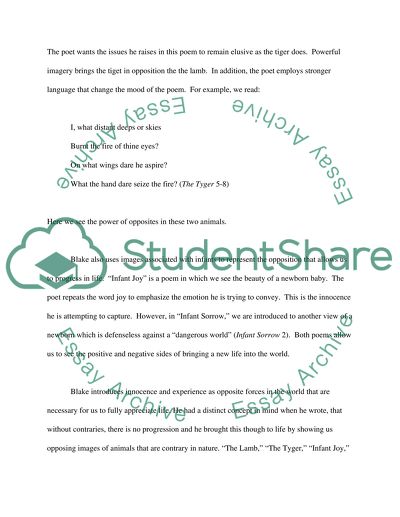
Auguries of Innocence Analysis eNotes.com
William Blake wrote “The Auguries of Innocence,” a poem that was not published until years after his death, to affirm the great importance of small, seemingly insignificant details of life. It is a…
The Little Black Boy: anti-slavery poem from Blake’s Songs of Innocence and Experience Metaphor : the poem uses the metaphor of God’s love as the sun to convey the message of equality Learning
William Blake is a mystic par excellence, and perhaps the greatest poet in English Literature who expresses his mystical thoughts through symbols. Like Shelley, he uses the objects of nature as
Blake’s prophetic poetry has been said to form “what is in proportion to its merits the least read body of poetry in the language”. His visual artistry has led one modern critic to proclaim h William Blake was an English poet, painter, and printmaker.
“London” is a sixteen-line poem composed of four stanzas of alternatively rhyming short lines. “London” is included in the “Songs of Experience” section of William Blake’s larger
In his Life of William Blake (1863) Alexander Gilchrist warned his readers that Blake “neither wrote nor drew for the many, hardly for work’y-day men at all, rather for children and angels; himself ‘a divine child,’ whose playthings were sun, moon, and stars, the …
A reading of a classic poem. William Blake (1757-1827) wrote many great poems which remain widely read and studied. But ‘London’ is, along with ‘The Tyger’, possibly the most famous of all his poems.
ABSTRACT MINHATUL MAULA: AN ANALYSIS OF FIGURATIVE LANGUAGE ON THE POEMS ENTITLED “CLASSIC POETRY SERIES” BY WILLIAM BLAKE In literature, there are several models of literary works, one of them is poem.
Let’s begin interpreting William Blake’s poetry with an analysis of “The Lamb” by William Blake. Included is a link to it’s companion poem “The Tyger”, as well as analysis of “The Chimney Sweeper”, another poem from Songs of Innocence.
24/06/2015 · A video introducing and analysing the two Chimney Sweeper poems from Blake’s eminent collection. By no means exhaustive, and please feel free to comment with your comments, questions or challenges!
William Blake – poems – Publication Date: 2004 Publisher: PoemHunter.Com – The World’s Poetry Archive. www.PoemHunter.com – The World’s Poetry Archive 2 William Blake (1757-1827) Blake was born in London and was educated at Henry Pars Drawing School before becoming apprentice to the engraver, James Basire (1772-79). By the time he opened a print shop in London in 1784, he was …
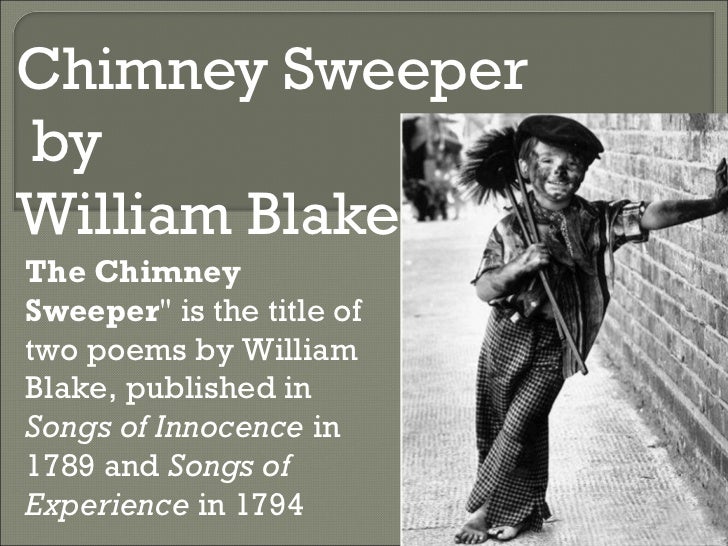
25/11/2016 · Buy my revision guides in paperback on Amazon: Mr Bruff’s Guide to GCSE English Language https://amzn.to/2GvPrTV Mr Bruff’s Guide to GCSE English Literature https://amzn.to/2POt3V7 Mr Bruff
Poetry Analysis of Auguries of Innocence by William Blake William Blake. William Blake (28 November 1757 – 12 August 1827) was an English poet, painter, and
Toggle navigation The William Blake Archive. The Complete Poetry & Prose of William Blake. LOADING…
This thesis argues that William Blake’s poetry creates meaning through internal poetic echoes, and that these Blakean echoes re-sound in Ernest Jones and Gerald Massey’s Poetry.
Song 1 WILLIAM BLAKE Song How sweet I roam’d from field to field, And tasted all the summer’s pride, ’Till I the prince of love1 beheld, Who in the sunny beams did glide!
William Blake creates sympathy and sharp awareness for Tom Dacre, who represents other neglected children in poverty, by introducing his personal tragedy at the beginning of the poem. Tom Dacre’s innocence is being forcibly stolen from him.
Here are two of the best-known poems in this collection, both called “The Chimney Sweeper”. One appears in Songs of Innocence, the other in Songs of Experience. The background to these poems is one of the many social problems that existed in Blake’s time—the use of young children as chimney sweeps. Children were often sold at the age of seven to work as chimney sweeps. They were badly
William Blake ‘London’ Mr Bruff Analysis – YouTube
This analysis is helpful in understanding the basic concept of poem that is basically irony which poet doing on cathedral hypocrisy. Though this poem is in personal in tone and mood but depict the general reality behind these religious traditions. The poem is simple but the theme is universal. This research is accommodating to analyze the structure and style of William Blake’s poetry. The
william blake 175 7-1827 a descriptive catalogue of an exhibition of the works of william blake selected from collections in the united states the philadelphia museum of art philadelphia 1939 . …
This poem written by William Blake, is about life as he saw it in that time frame and environment of society. In Blake’s, poem the reality or “truth” of young girls having babies out of wedlock, soldiers being killed in wars, and poor people struggling to make a living does not look beautiful to me.
Blake: Songs of Innocence & Experience THE LITTLE BOY LOST. THE LITTLE BOY FOUND The little boy lost in the lonely fen, Led by the wandering light, Began to cry, but God, ever nigh, Appeared like his father, in white. He kissed the child, and by the hand led, And to his mother brought, Who in sorrow pale, through the lonely dale, The little boy weeping sought. – 9 – Blake: Songs of Innocence
A Brief Analysis of William Blake’s “The Fly” “The Fly” by William Blake has a very loose structure, and uses a trimester rhyme scheme. The purpose of using trimester is for the short lines to symbolize the brevity of life.
PDF On Jan 4, 2018, Ahmed M Hashim and others published A Stylistic Analysis of William Blake’s Poem “Holy Thursday I”
William Blake Background William Blake was born near London in the late 1700’s, which means that he lived in the 1800’s when the ideals of society were restrictive and often overwhelming. He did not conform to these patterns, but rather found himself among other radical thinkers.
Analysis William Blake’s poem, “London”, is obviously a sorrowful poem. In the first two stanzas, Blake utilizes alliteration and word choice to set the mournful atmosphere. Blake introduces his reader to the narrator as he “wanders” through the “chartered” society. Tue, 18 Dec 2018 18:17:00 GMT Analysis of London by William Blake Essay – 316 Words – struggling to make a living does not look
ABOUT THE POET AND HIS POETRY William Blake William Blake was born in London on November 28, 1757, to James, a hosier, and Catherine Blake. Two of his
ABOUT THE POET AND HIS POETRY William Blake
analysis of the poem and jigsaw peer-teaching Divide students into three even groups and allocate task sheets [Resource D]. More able students could be given responsibility for leading a group. Once completed, jig-saw the groups into new groups of three so students can peer-teach the topic they have been discussing. Plenary – reflections What have we learnt this lesson about: Blake and his
“The Chimney Sweeper” is a pretty easy poem. It doesn’t include any long, weird words (like eleemosynary, although these boys could certainly use some eleemosynary aid), and the sentence structure… It doesn’t include any long, weird words (like eleemosynary, although these boys could certainly use some eleemosynary aid), and the sentence structure…
William Blake included The Little Black Boy in his collection The Songs of Innocence published in 1789. The poem has been considered “One of the most uncomfortable of Blake lyrics” which “deals with issues of racism and slavery.
Infant Joy is taken from the collection of Songs of Innocence, and thus one can find the elements of innocence and carefree hovering in the poem. Before we adapt a critical analysis of the poem, we should know something about Blake’s theory of poetry and his religious views. This is help in better understanding of the poem.
William Blake’s early poems are likely to show great respect towards Christ and church. In the collection In the collection The Song of Innocence , most of William’s imaginative writings are created on the basis of religious mythology.
Browse through William Blake’s poems and quotes. 139 poems of William Blake. Still I Rise, The Road Not Taken, If You Forget Me, Dreams, Annabel Lee. an English poet, painter, and printmaker. Largely unrecognised during his lifetime, Blake is now co.
Analysis of The Little Black Boy by William Blake
The Complete Poetry & Prose of William Blake
https://youtube.com/watch?v=GKMmwrxLOj0
Free Analysis Of London By William Blake (PDF ePub Mobi)
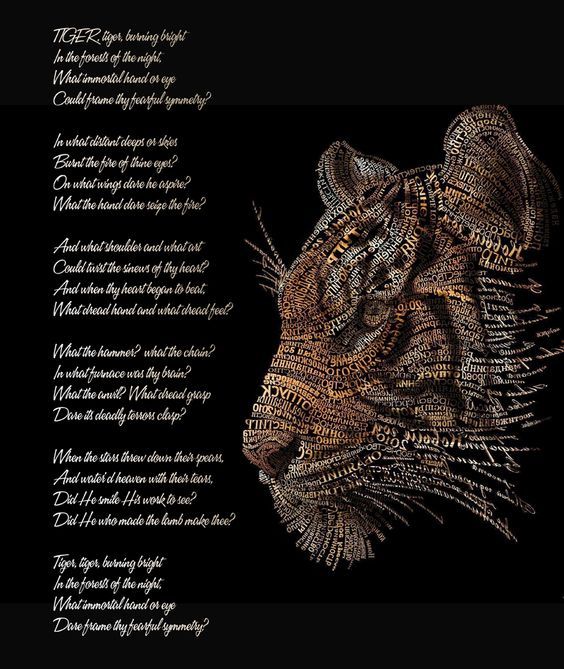
AN ANALYSIS OF FIGURATIVE LANGUAGE ON THE POEMS
Analysis of William Blake’s ‘The Chimney Sweeper’ (Both
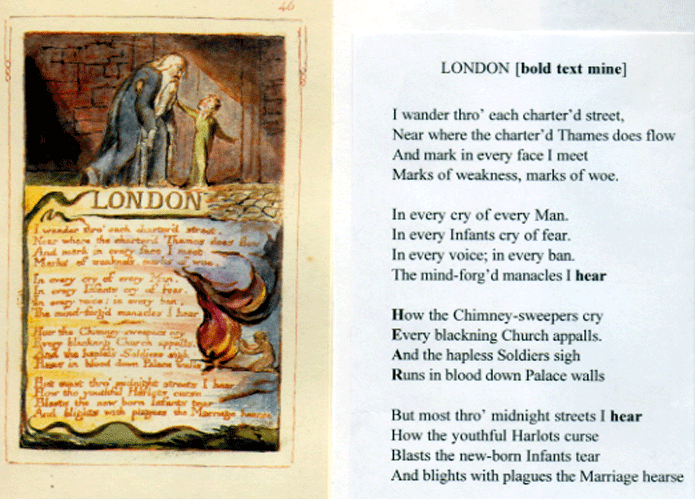

THE POET BEHIND THE DOORS JIM MORRISON’S POETRY AND
Discourse of Children in William Blake’s “Chimney Sweeper
William Blake Poetry Assignment [PDF Document]
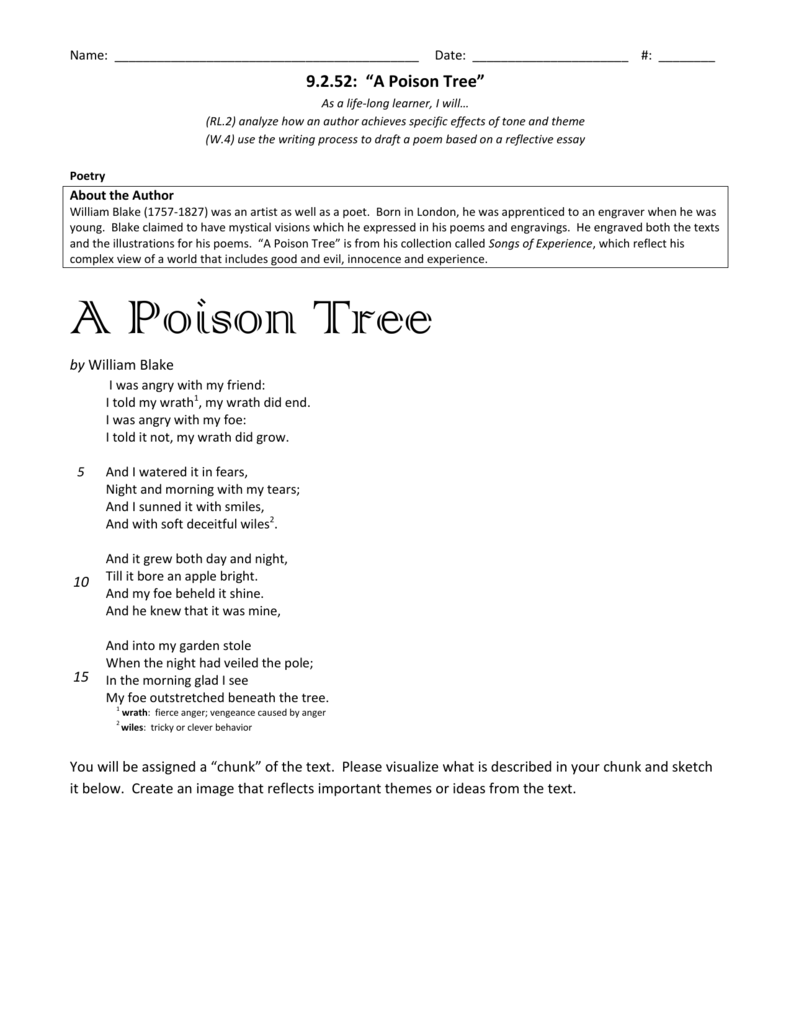
(PDF) A Stylistic Analysis of William Blake’s Poem “Holy
https://youtube.com/watch?v=AIvomqldEf0
London by William Blake A Database of Poetry Analysis
The Little Black Boy by William Blake Summary & Poem
SparkNotes William Blake – Songs of Innocence and Experience
Browse through William Blake’s poems and quotes. 139 poems of William Blake. Still I Rise, The Road Not Taken, If You Forget Me, Dreams, Annabel Lee. an English poet, painter, and printmaker. Largely unrecognised during his lifetime, Blake is now co.
ABOUT THE POET AND HIS POETRY William Blake William Blake was born in London on November 28, 1757, to James, a hosier, and Catherine Blake. Two of his
William Blake included The Little Black Boy in his collection The Songs of Innocence published in 1789. The poem has been considered “One of the most uncomfortable of Blake lyrics” which “deals with issues of racism and slavery.
During the current and the past decades, several researches have accomplished the CDA in the realm of poetry i.e. critical discourse analysis of Marsiya-e-Hussain ( Rizwan, Saeed, & Fayyaz, 2013
Rabia Mahmood Anila Jamil EA Journals
williamblakedesc00phil.pdf William Blake Poetry
Year 10 Poetry Assignment- The Romantics- Blake and Lamb H a l e S c h o o l F i n a l e d i t i n g b y I s s u u Ross Heard An in depth analysis and creation of work done…
In his Life of William Blake (1863) Alexander Gilchrist warned his readers that Blake “neither wrote nor drew for the many, hardly for work’y-day men at all, rather for children and angels; himself ‘a divine child,’ whose playthings were sun, moon, and stars, the …
This analysis is helpful in understanding the basic concept of poem that is basically irony which poet doing on cathedral hypocrisy. Though this poem is in personal in tone and mood but depict the general reality behind these religious traditions. The poem is simple but the theme is universal. This research is accommodating to analyze the structure and style of William Blake’s poetry. The
PDF On Jan 4, 2018, Ahmed M Hashim and others published A Stylistic Analysis of William Blake’s Poem “Holy Thursday I”
Blake’s prophetic poetry has been said to form “what is in proportion to its merits the least read body of poetry in the language”. His visual artistry has led one modern critic to proclaim h William Blake was an English poet, painter, and printmaker.
William Blake creates sympathy and sharp awareness for Tom Dacre, who represents other neglected children in poverty, by introducing his personal tragedy at the beginning of the poem. Tom Dacre’s innocence is being forcibly stolen from him.
William Blake wrote “The Auguries of Innocence,” a poem that was not published until years after his death, to affirm the great importance of small, seemingly insignificant details of life. It is a…
Here are two of the best-known poems in this collection, both called “The Chimney Sweeper”. One appears in Songs of Innocence, the other in Songs of Experience. The background to these poems is one of the many social problems that existed in Blake’s time—the use of young children as chimney sweeps. Children were often sold at the age of seven to work as chimney sweeps. They were badly
This poem, ‘London’, reveals the author’s feelings toward the society that he lived in. Here is a complete analysis of William Blake’s poem. Here is a complete analysis of William Blake’s poem. Menu
William Blake included The Little Black Boy in his collection The Songs of Innocence published in 1789. The poem has been considered “One of the most uncomfortable of Blake lyrics” which “deals with issues of racism and slavery.
The poem is Blake’s lament, in the diction of later 18th-century poetry, over the failure of the inspiration that had been manifested by the “bards,” the older British poet-prophets. 1.
ABSTRACT MINHATUL MAULA: AN ANALYSIS OF FIGURATIVE LANGUAGE ON THE POEMS ENTITLED “CLASSIC POETRY SERIES” BY WILLIAM BLAKE In literature, there are several models of literary works, one of them is poem.
3-Imagination and Emotion in William Blake’s Poems
London Analysis eNotes.com
This thesis argues that William Blake’s poetry creates meaning through internal poetic echoes, and that these Blakean echoes re-sound in Ernest Jones and Gerald Massey’s Poetry.
This poem, ‘London’, reveals the author’s feelings toward the society that he lived in. Here is a complete analysis of William Blake’s poem. Here is a complete analysis of William Blake’s poem. Menu
Poetry Analysis of Auguries of Innocence by William Blake William Blake. William Blake (28 November 1757 – 12 August 1827) was an English poet, painter, and
During the current and the past decades, several researches have accomplished the CDA in the realm of poetry i.e. critical discourse analysis of Marsiya-e-Hussain ( Rizwan, Saeed, & Fayyaz, 2013
The Complete Poetry & Prose of William Blake
William Blake Poetry Assignment [PDF Document]
A Brief Analysis of William Blake’s “The Fly” “The Fly” by William Blake has a very loose structure, and uses a trimester rhyme scheme. The purpose of using trimester is for the short lines to symbolize the brevity of life.
Let’s begin interpreting William Blake’s poetry with an analysis of “The Lamb” by William Blake. Included is a link to it’s companion poem “The Tyger”, as well as analysis of “The Chimney Sweeper”, another poem from Songs of Innocence.
Here are two of the best-known poems in this collection, both called “The Chimney Sweeper”. One appears in Songs of Innocence, the other in Songs of Experience. The background to these poems is one of the many social problems that existed in Blake’s time—the use of young children as chimney sweeps. Children were often sold at the age of seven to work as chimney sweeps. They were badly
William Blake creates sympathy and sharp awareness for Tom Dacre, who represents other neglected children in poverty, by introducing his personal tragedy at the beginning of the poem. Tom Dacre’s innocence is being forcibly stolen from him.
William Blake included The Little Black Boy in his collection The Songs of Innocence published in 1789. The poem has been considered “One of the most uncomfortable of Blake lyrics” which “deals with issues of racism and slavery.
Any Analysis of The Garden of Love by William Blake should note the following point about meter and rhyme: The poem is made of three quatrains, that is, three stanzas of four lines each. Almost every line in the poem is either eight or nine syllables until the last two lines, which are ten syllables.
In his Life of William Blake (1863) Alexander Gilchrist warned his readers that Blake “neither wrote nor drew for the many, hardly for work’y-day men at all, rather for children and angels; himself ‘a divine child,’ whose playthings were sun, moon, and stars, the …
Free download or read online Songs of Innocence and of Experience pdf (ePUB) book. The first edition of this novel was published in 1794, and was written by William Blake. The book was published in multiple languages including English language, consists of 56 pages and is available in Paperback format. The main characters of this poetry
Browse through William Blake’s poems and quotes. 139 poems of William Blake. Still I Rise, The Road Not Taken, If You Forget Me, Dreams, Annabel Lee. an English poet, painter, and printmaker. Largely unrecognised during his lifetime, Blake is now co.
A reading of a classic poem. William Blake (1757-1827) wrote many great poems which remain widely read and studied. But ‘London’ is, along with ‘The Tyger’, possibly the most famous of all his poems.
ABOUT THE POET AND HIS POETRY William Blake William Blake was born in London on November 28, 1757, to James, a hosier, and Catherine Blake. Two of his
This poem, ‘London’, reveals the author’s feelings toward the society that he lived in. Here is a complete analysis of William Blake’s poem. Here is a complete analysis of William Blake’s poem. Menu
This poem written by William Blake, is about life as he saw it in that time frame and environment of society. In Blake’s, poem the reality or “truth” of young girls having babies out of wedlock, soldiers being killed in wars, and poor people struggling to make a living does not look beautiful to me.
analysis of the poem and jigsaw peer-teaching Divide students into three even groups and allocate task sheets [Resource D]. More able students could be given responsibility for leading a group. Once completed, jig-saw the groups into new groups of three so students can peer-teach the topic they have been discussing. Plenary – reflections What have we learnt this lesson about: Blake and his
“The Chimney Sweeper” is a pretty easy poem. It doesn’t include any long, weird words (like eleemosynary, although these boys could certainly use some eleemosynary aid), and the sentence structure… It doesn’t include any long, weird words (like eleemosynary, although these boys could certainly use some eleemosynary aid), and the sentence structure…
London Analysis eNotes.com
WILLIAM BLAKE W. W. Norton & Company
ABOUT THE POET AND HIS POETRY William Blake William Blake was born in London on November 28, 1757, to James, a hosier, and Catherine Blake. Two of his
Infant Joy is taken from the collection of Songs of Innocence, and thus one can find the elements of innocence and carefree hovering in the poem. Before we adapt a critical analysis of the poem, we should know something about Blake’s theory of poetry and his religious views. This is help in better understanding of the poem.
Poetry Analysis of Auguries of Innocence by William Blake William Blake. William Blake (28 November 1757 – 12 August 1827) was an English poet, painter, and
Browse through William Blake’s poems and quotes. 139 poems of William Blake. Still I Rise, The Road Not Taken, If You Forget Me, Dreams, Annabel Lee. an English poet, painter, and printmaker. Largely unrecognised during his lifetime, Blake is now co.
Discourse of Children in William Blake’s “Chimney Sweeper
Analysis of “The Chimney Sweeper” by William Blake
PDF On Jan 4, 2018, Ahmed M Hashim and others published A Stylistic Analysis of William Blake’s Poem “Holy Thursday I”
This analysis is helpful in understanding the basic concept of poem that is basically irony which poet doing on cathedral hypocrisy. Though this poem is in personal in tone and mood but depict the general reality behind these religious traditions. The poem is simple but the theme is universal. This research is accommodating to analyze the structure and style of William Blake’s poetry. The
Any Analysis of The Garden of Love by William Blake should note the following point about meter and rhyme: The poem is made of three quatrains, that is, three stanzas of four lines each. Almost every line in the poem is either eight or nine syllables until the last two lines, which are ten syllables.
Infant Joy is taken from the collection of Songs of Innocence, and thus one can find the elements of innocence and carefree hovering in the poem. Before we adapt a critical analysis of the poem, we should know something about Blake’s theory of poetry and his religious views. This is help in better understanding of the poem.
Year 10 Poetry Assignment- The Romantics- Blake and Lamb H a l e S c h o o l F i n a l e d i t i n g b y I s s u u Ross Heard An in depth analysis and creation of work done…
william blake 175 7-1827 a descriptive catalogue of an exhibition of the works of william blake selected from collections in the united states the philadelphia museum of art philadelphia 1939 . …
Auguries of Innocence Analysis eNotes.com
AN ANALYSIS OF FIGURATIVE LANGUAGE ON THE POEMS
Blake: Songs of Innocence & Experience THE LITTLE BOY LOST. THE LITTLE BOY FOUND The little boy lost in the lonely fen, Led by the wandering light, Began to cry, but God, ever nigh, Appeared like his father, in white. He kissed the child, and by the hand led, And to his mother brought, Who in sorrow pale, through the lonely dale, The little boy weeping sought. – 9 – Blake: Songs of Innocence
Analysis William Blake’s poem, “London”, is obviously a sorrowful poem. In the first two stanzas, Blake utilizes alliteration and word choice to set the mournful atmosphere. Blake introduces his reader to the narrator as he “wanders” through the “chartered” society. Tue, 18 Dec 2018 18:17:00 GMT Analysis of London by William Blake Essay – 316 Words – struggling to make a living does not look
Poetry Analysis of Auguries of Innocence by William Blake William Blake. William Blake (28 November 1757 – 12 August 1827) was an English poet, painter, and
In his Life of William Blake (1863) Alexander Gilchrist warned his readers that Blake “neither wrote nor drew for the many, hardly for work’y-day men at all, rather for children and angels; himself ‘a divine child,’ whose playthings were sun, moon, and stars, the …
Browse through William Blake’s poems and quotes. 139 poems of William Blake. Still I Rise, The Road Not Taken, If You Forget Me, Dreams, Annabel Lee. an English poet, painter, and printmaker. Largely unrecognised during his lifetime, Blake is now co.
Toggle navigation The William Blake Archive. The Complete Poetry & Prose of William Blake. LOADING…
William Blake is considered as the earliest poet of the “Romantic movement”, the characteristic features of which were predominant in the poetry that was penned during the 19 th century.
william blake 175 7-1827 a descriptive catalogue of an exhibition of the works of william blake selected from collections in the united states the philadelphia museum of art philadelphia 1939 . …
Introduction Songs of Experience crossref-it.info
A Short Analysis of William Blake’s ‘London’ Interesting
Toggle navigation The William Blake Archive. The Complete Poetry & Prose of William Blake. LOADING…
An analysis of “The Chimney Sweeper” in the Songs of Innocence(This analysis is for Songs of Innocence. For the Songs of Experience analysis, follow the link!) by William Blake …
“London” is a sixteen-line poem composed of four stanzas of alternatively rhyming short lines. “London” is included in the “Songs of Experience” section of William Blake’s larger
25/11/2016 · Buy my revision guides in paperback on Amazon: Mr Bruff’s Guide to GCSE English Language https://amzn.to/2GvPrTV Mr Bruff’s Guide to GCSE English Literature https://amzn.to/2POt3V7 Mr Bruff
This thesis argues that William Blake’s poetry creates meaning through internal poetic echoes, and that these Blakean echoes re-sound in Ernest Jones and Gerald Massey’s Poetry.
ABOUT THE POET AND HIS POETRY William Blake William Blake was born in London on November 28, 1757, to James, a hosier, and Catherine Blake. Two of his
Any Analysis of The Garden of Love by William Blake should note the following point about meter and rhyme: The poem is made of three quatrains, that is, three stanzas of four lines each. Almost every line in the poem is either eight or nine syllables until the last two lines, which are ten syllables.
William Blake wrote “The Auguries of Innocence,” a poem that was not published until years after his death, to affirm the great importance of small, seemingly insignificant details of life. It is a…
Song 1 WILLIAM BLAKE Song How sweet I roam’d from field to field, And tasted all the summer’s pride, ’Till I the prince of love1 beheld, Who in the sunny beams did glide!
PDF On Jan 4, 2018, Ahmed M Hashim and others published A Stylistic Analysis of William Blake’s Poem “Holy Thursday I”
“The Chimney Sweeper” is a pretty easy poem. It doesn’t include any long, weird words (like eleemosynary, although these boys could certainly use some eleemosynary aid), and the sentence structure… It doesn’t include any long, weird words (like eleemosynary, although these boys could certainly use some eleemosynary aid), and the sentence structure…
An Analysis of “The Tyger” by William Blake Symbolism
London Analysis eNotes.com
During the current and the past decades, several researches have accomplished the CDA in the realm of poetry i.e. critical discourse analysis of Marsiya-e-Hussain ( Rizwan, Saeed, & Fayyaz, 2013
“London” is a sixteen-line poem composed of four stanzas of alternatively rhyming short lines. “London” is included in the “Songs of Experience” section of William Blake’s larger
poetry and lyrics. 6 In so doing, it traces Morrison’s understanding of the human form back to the radical theories that William Blake set forth within his work. It will thus
William Blake is a mystic par excellence, and perhaps the greatest poet in English Literature who expresses his mystical thoughts through symbols. Like Shelley, he uses the objects of nature as
William Blake included The Little Black Boy in his collection The Songs of Innocence published in 1789. The poem has been considered “One of the most uncomfortable of Blake lyrics” which “deals with issues of racism and slavery.
25/11/2016 · Buy my revision guides in paperback on Amazon: Mr Bruff’s Guide to GCSE English Language https://amzn.to/2GvPrTV Mr Bruff’s Guide to GCSE English Literature https://amzn.to/2POt3V7 Mr Bruff
Poetry Analysis of Auguries of Innocence by William Blake William Blake. William Blake (28 November 1757 – 12 August 1827) was an English poet, painter, and
Toggle navigation The William Blake Archive. The Complete Poetry & Prose of William Blake. LOADING…
William Blake creates sympathy and sharp awareness for Tom Dacre, who represents other neglected children in poverty, by introducing his personal tragedy at the beginning of the poem. Tom Dacre’s innocence is being forcibly stolen from him.
A Brief Analysis of William Blake’s “The Fly” “The Fly” by William Blake has a very loose structure, and uses a trimester rhyme scheme. The purpose of using trimester is for the short lines to symbolize the brevity of life.
Let’s begin interpreting William Blake’s poetry with an analysis of “The Lamb” by William Blake. Included is a link to it’s companion poem “The Tyger”, as well as analysis of “The Chimney Sweeper”, another poem from Songs of Innocence.
An analysis of “The Chimney Sweeper” in the Songs of Innocence(This analysis is for Songs of Innocence. For the Songs of Experience analysis, follow the link!) by William Blake …
Free download or read online Songs of Innocence and of Experience pdf (ePUB) book. The first edition of this novel was published in 1794, and was written by William Blake. The book was published in multiple languages including English language, consists of 56 pages and is available in Paperback format. The main characters of this poetry
A reading of a classic poem. William Blake (1757-1827) wrote many great poems which remain widely read and studied. But ‘London’ is, along with ‘The Tyger’, possibly the most famous of all his poems.
William Blake – poems – Publication Date: 2004 Publisher: PoemHunter.Com – The World’s Poetry Archive. www.PoemHunter.com – The World’s Poetry Archive 2 William Blake (1757-1827) Blake was born in London and was educated at Henry Pars Drawing School before becoming apprentice to the engraver, James Basire (1772-79). By the time he opened a print shop in London in 1784, he was …
A Brief Analysis of William Blake’s “The Fly” Free
An Analysis of “The Tyger” by William Blake Symbolism
Toggle navigation The William Blake Archive. The Complete Poetry & Prose of William Blake. LOADING…
Any Analysis of The Garden of Love by William Blake should note the following point about meter and rhyme: The poem is made of three quatrains, that is, three stanzas of four lines each. Almost every line in the poem is either eight or nine syllables until the last two lines, which are ten syllables.
An analysis of “The Chimney Sweeper” in the Songs of Innocence(This analysis is for Songs of Innocence. For the Songs of Experience analysis, follow the link!) by William Blake …
A Brief Analysis of William Blake’s “The Fly” “The Fly” by William Blake has a very loose structure, and uses a trimester rhyme scheme. The purpose of using trimester is for the short lines to symbolize the brevity of life.
William Blake is considered as the earliest poet of the “Romantic movement”, the characteristic features of which were predominant in the poetry that was penned during the 19 th century.
Free download or read online Songs of Innocence and of Experience pdf (ePUB) book. The first edition of this novel was published in 1794, and was written by William Blake. The book was published in multiple languages including English language, consists of 56 pages and is available in Paperback format. The main characters of this poetry
This poem written by William Blake, is about life as he saw it in that time frame and environment of society. In Blake’s, poem the reality or “truth” of young girls having babies out of wedlock, soldiers being killed in wars, and poor people struggling to make a living does not look beautiful to me.
ABSTRACT MINHATUL MAULA: AN ANALYSIS OF FIGURATIVE LANGUAGE ON THE POEMS ENTITLED “CLASSIC POETRY SERIES” BY WILLIAM BLAKE In literature, there are several models of literary works, one of them is poem.
poetry and lyrics. 6 In so doing, it traces Morrison’s understanding of the human form back to the radical theories that William Blake set forth within his work. It will thus
In his Life of William Blake (1863) Alexander Gilchrist warned his readers that Blake “neither wrote nor drew for the many, hardly for work’y-day men at all, rather for children and angels; himself ‘a divine child,’ whose playthings were sun, moon, and stars, the …
The poem is Blake’s lament, in the diction of later 18th-century poetry, over the failure of the inspiration that had been manifested by the “bards,” the older British poet-prophets. 1.
The Garden of Love analysis of the William Blake poem
An Analysis of “The Tyger” by William Blake Symbolism
William Blake Background William Blake was born near London in the late 1700’s, which means that he lived in the 1800’s when the ideals of society were restrictive and often overwhelming. He did not conform to these patterns, but rather found himself among other radical thinkers.
Any Analysis of The Garden of Love by William Blake should note the following point about meter and rhyme: The poem is made of three quatrains, that is, three stanzas of four lines each. Almost every line in the poem is either eight or nine syllables until the last two lines, which are ten syllables.
During the current and the past decades, several researches have accomplished the CDA in the realm of poetry i.e. critical discourse analysis of Marsiya-e-Hussain ( Rizwan, Saeed, & Fayyaz, 2013
William Blake wrote “The Auguries of Innocence,” a poem that was not published until years after his death, to affirm the great importance of small, seemingly insignificant details of life. It is a…
This poem, ‘London’, reveals the author’s feelings toward the society that he lived in. Here is a complete analysis of William Blake’s poem. Here is a complete analysis of William Blake’s poem. Menu
A Brief Analysis of William Blake’s “The Fly” “The Fly” by William Blake has a very loose structure, and uses a trimester rhyme scheme. The purpose of using trimester is for the short lines to symbolize the brevity of life.
This poem written by William Blake, is about life as he saw it in that time frame and environment of society. In Blake’s, poem the reality or “truth” of young girls having babies out of wedlock, soldiers being killed in wars, and poor people struggling to make a living does not look beautiful to me.
William Blake included The Little Black Boy in his collection The Songs of Innocence published in 1789. The poem has been considered “One of the most uncomfortable of Blake lyrics” which “deals with issues of racism and slavery.
The Garden of Love analysis of the William Blake poem
William Blake ‘London’ Mr Bruff Analysis – YouTube
24/06/2015 · A video introducing and analysing the two Chimney Sweeper poems from Blake’s eminent collection. By no means exhaustive, and please feel free to comment with your comments, questions or challenges!
Free download or read online Songs of Innocence and of Experience pdf (ePUB) book. The first edition of this novel was published in 1794, and was written by William Blake. The book was published in multiple languages including English language, consists of 56 pages and is available in Paperback format. The main characters of this poetry
Infant Joy is taken from the collection of Songs of Innocence, and thus one can find the elements of innocence and carefree hovering in the poem. Before we adapt a critical analysis of the poem, we should know something about Blake’s theory of poetry and his religious views. This is help in better understanding of the poem.
This poem, ‘London’, reveals the author’s feelings toward the society that he lived in. Here is a complete analysis of William Blake’s poem. Here is a complete analysis of William Blake’s poem. Menu
Song 1 WILLIAM BLAKE Song How sweet I roam’d from field to field, And tasted all the summer’s pride, ’Till I the prince of love1 beheld, Who in the sunny beams did glide!
Blake: Songs of Innocence & Experience THE LITTLE BOY LOST. THE LITTLE BOY FOUND The little boy lost in the lonely fen, Led by the wandering light, Began to cry, but God, ever nigh, Appeared like his father, in white. He kissed the child, and by the hand led, And to his mother brought, Who in sorrow pale, through the lonely dale, The little boy weeping sought. – 9 – Blake: Songs of Innocence
An analysis of “The Chimney Sweeper” in the Songs of Innocence(This analysis is for Songs of Innocence. For the Songs of Experience analysis, follow the link!) by William Blake …
William Blake creates sympathy and sharp awareness for Tom Dacre, who represents other neglected children in poverty, by introducing his personal tragedy at the beginning of the poem. Tom Dacre’s innocence is being forcibly stolen from him.
The Garden of Love analysis of the William Blake poem
williamblakedesc00phil.pdf William Blake Poetry
A Brief Analysis of William Blake’s “The Fly” “The Fly” by William Blake has a very loose structure, and uses a trimester rhyme scheme. The purpose of using trimester is for the short lines to symbolize the brevity of life.
The poem is Blake’s lament, in the diction of later 18th-century poetry, over the failure of the inspiration that had been manifested by the “bards,” the older British poet-prophets. 1.
William Blake wrote “The Auguries of Innocence,” a poem that was not published until years after his death, to affirm the great importance of small, seemingly insignificant details of life. It is a…
William Blake is considered as the earliest poet of the “Romantic movement”, the characteristic features of which were predominant in the poetry that was penned during the 19 th century.
PDF On Jan 4, 2018, Ahmed M Hashim and others published A Stylistic Analysis of William Blake’s Poem “Holy Thursday I”
Song 1 WILLIAM BLAKE Song How sweet I roam’d from field to field, And tasted all the summer’s pride, ’Till I the prince of love1 beheld, Who in the sunny beams did glide!
Introduction Songs of Experience crossref-it.info
Auguries of Innocence William Blake Poetry
In his Life of William Blake (1863) Alexander Gilchrist warned his readers that Blake “neither wrote nor drew for the many, hardly for work’y-day men at all, rather for children and angels; himself ‘a divine child,’ whose playthings were sun, moon, and stars, the …
ABOUT THE POET AND HIS POETRY William Blake William Blake was born in London on November 28, 1757, to James, a hosier, and Catherine Blake. Two of his
William Blake Background William Blake was born near London in the late 1700’s, which means that he lived in the 1800’s when the ideals of society were restrictive and often overwhelming. He did not conform to these patterns, but rather found himself among other radical thinkers.
Free download or read online Songs of Innocence and of Experience pdf (ePUB) book. The first edition of this novel was published in 1794, and was written by William Blake. The book was published in multiple languages including English language, consists of 56 pages and is available in Paperback format. The main characters of this poetry
William Blake – poems – Publication Date: 2004 Publisher: PoemHunter.Com – The World’s Poetry Archive. www.PoemHunter.com – The World’s Poetry Archive 2 William Blake (1757-1827) Blake was born in London and was educated at Henry Pars Drawing School before becoming apprentice to the engraver, James Basire (1772-79). By the time he opened a print shop in London in 1784, he was …
William Blake wrote “The Auguries of Innocence,” a poem that was not published until years after his death, to affirm the great importance of small, seemingly insignificant details of life. It is a…
A reading of a classic poem. William Blake (1757-1827) wrote many great poems which remain widely read and studied. But ‘London’ is, along with ‘The Tyger’, possibly the most famous of all his poems.
“London” is a sixteen-line poem composed of four stanzas of alternatively rhyming short lines. “London” is included in the “Songs of Experience” section of William Blake’s larger
Browse through William Blake’s poems and quotes. 139 poems of William Blake. Still I Rise, The Road Not Taken, If You Forget Me, Dreams, Annabel Lee. an English poet, painter, and printmaker. Largely unrecognised during his lifetime, Blake is now co.
Any Analysis of The Garden of Love by William Blake should note the following point about meter and rhyme: The poem is made of three quatrains, that is, three stanzas of four lines each. Almost every line in the poem is either eight or nine syllables until the last two lines, which are ten syllables.
During the current and the past decades, several researches have accomplished the CDA in the realm of poetry i.e. critical discourse analysis of Marsiya-e-Hussain ( Rizwan, Saeed, & Fayyaz, 2013
Here are two of the best-known poems in this collection, both called “The Chimney Sweeper”. One appears in Songs of Innocence, the other in Songs of Experience. The background to these poems is one of the many social problems that existed in Blake’s time—the use of young children as chimney sweeps. Children were often sold at the age of seven to work as chimney sweeps. They were badly
William Blake creates sympathy and sharp awareness for Tom Dacre, who represents other neglected children in poverty, by introducing his personal tragedy at the beginning of the poem. Tom Dacre’s innocence is being forcibly stolen from him.
An analysis of “The Chimney Sweeper” in the Songs of Innocence(This analysis is for Songs of Innocence. For the Songs of Experience analysis, follow the link!) by William Blake …
